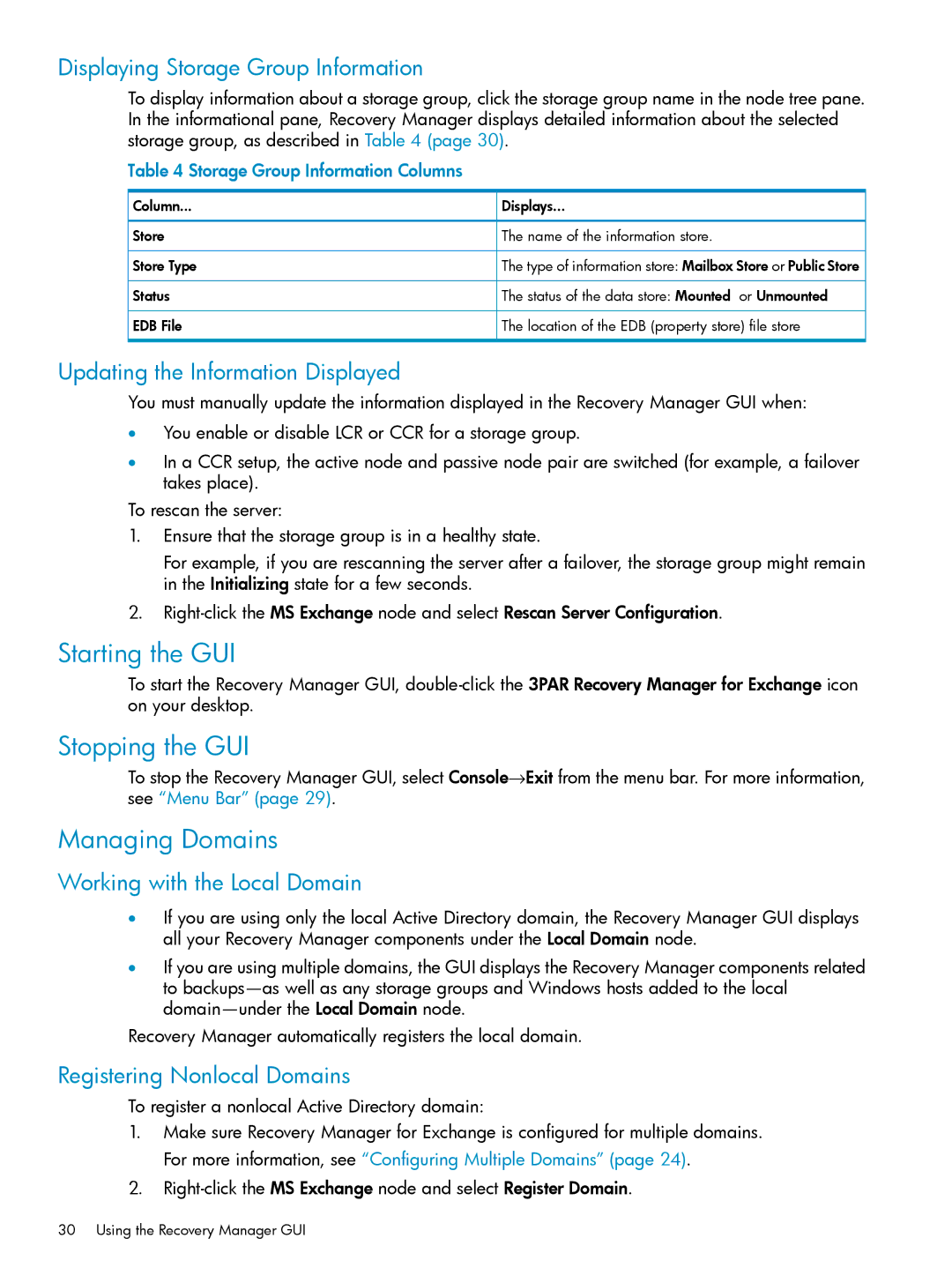
Displaying Storage Group Information
To display information about a storage group, click the storage group name in the node tree pane. In the informational pane, Recovery Manager displays detailed information about the selected storage group, as described in Table 4 (page 30).
Table 4 Storage Group Information Columns
Column... | Displays... |
Store | The name of the information store. |
Store Type | The type of information store: Mailbox Store or Public Store |
Status | The status of the data store: Mounted or Unmounted |
EDB File | The location of the EDB (property store) file store |
Updating the Information Displayed
You must manually update the information displayed in the Recovery Manager GUI when:
•You enable or disable LCR or CCR for a storage group.
•In a CCR setup, the active node and passive node pair are switched (for example, a failover takes place).
To rescan the server:
1.Ensure that the storage group is in a healthy state.
For example, if you are rescanning the server after a failover, the storage group might remain in the Initializing state for a few seconds.
2.
Starting the GUI
To start the Recovery Manager GUI,
Stopping the GUI
To stop the Recovery Manager GUI, select Console→Exit from the menu bar. For more information, see “Menu Bar” (page 29).
Managing Domains
Working with the Local Domain
•If you are using only the local Active Directory domain, the Recovery Manager GUI displays all your Recovery Manager components under the Local Domain node.
•If you are using multiple domains, the GUI displays the Recovery Manager components related to
Recovery Manager automatically registers the local domain.
Registering Nonlocal Domains
To register a nonlocal Active Directory domain:
1.Make sure Recovery Manager for Exchange is configured for multiple domains. For more information, see “Configuring Multiple Domains” (page 24).
2.
30 Using the Recovery Manager GUI
